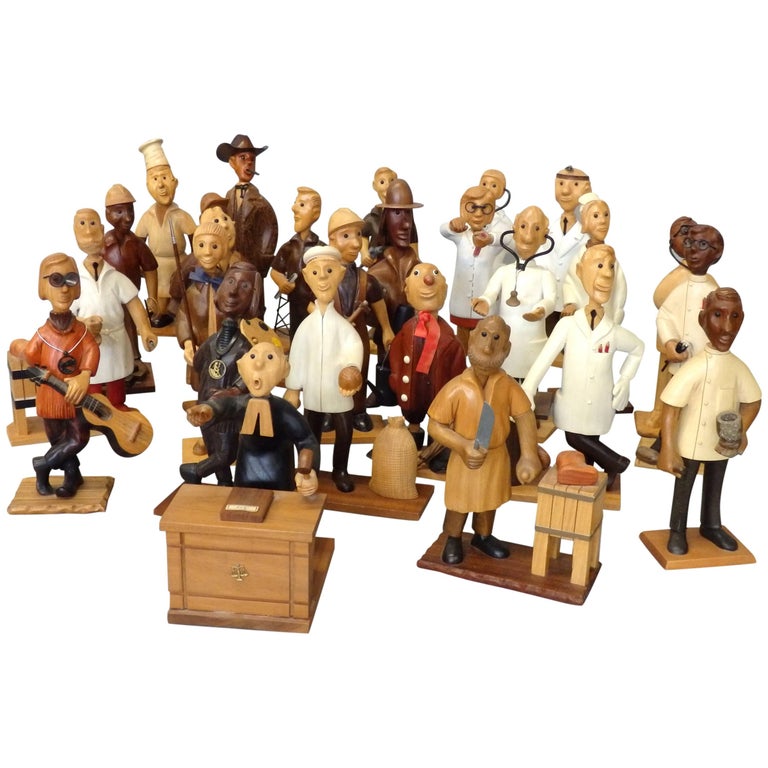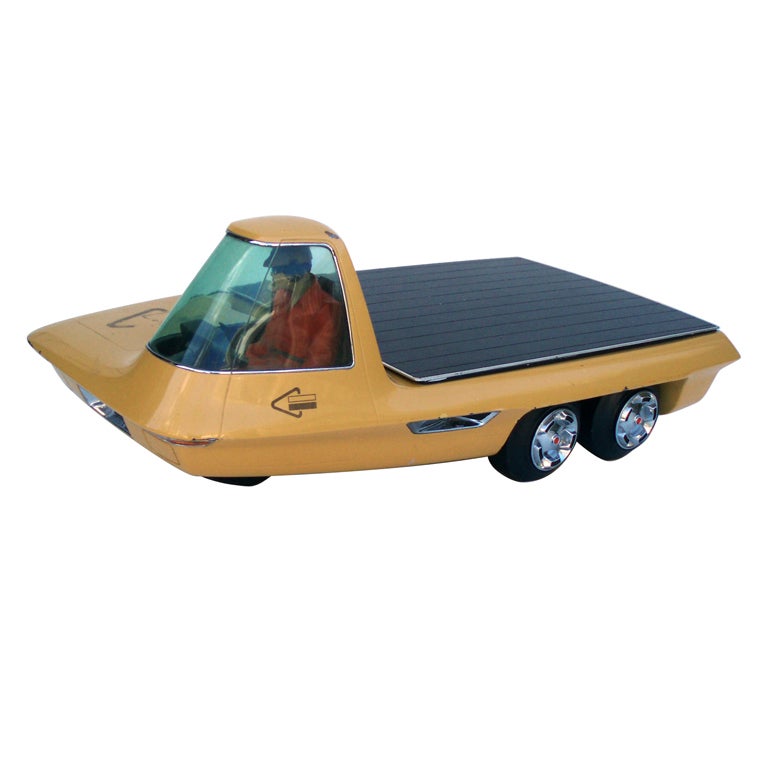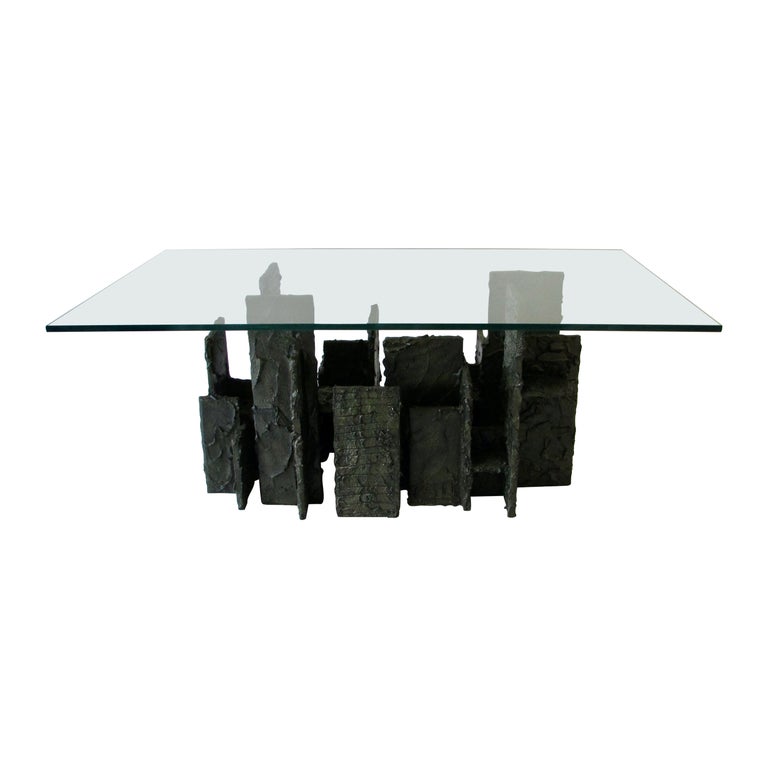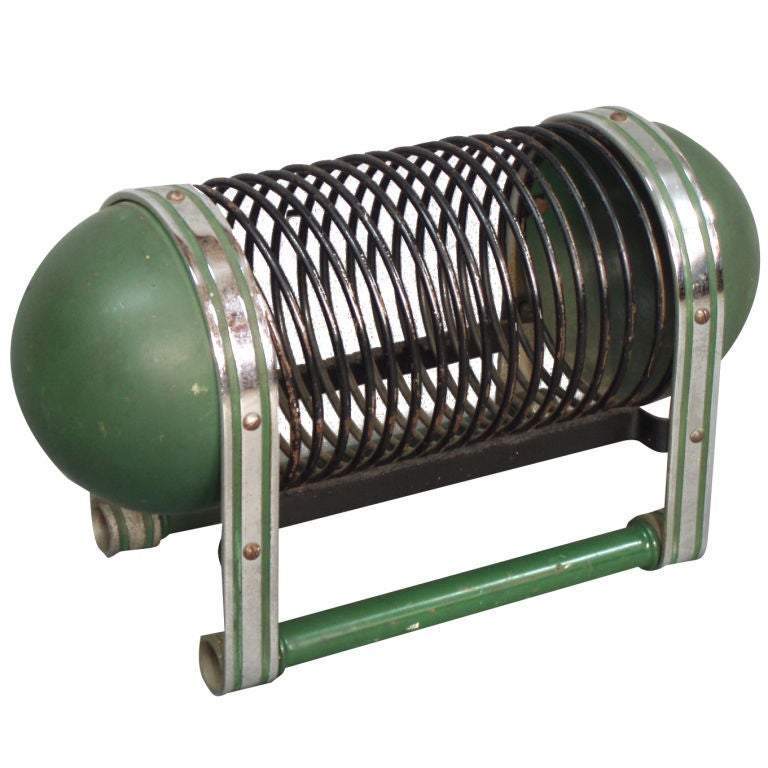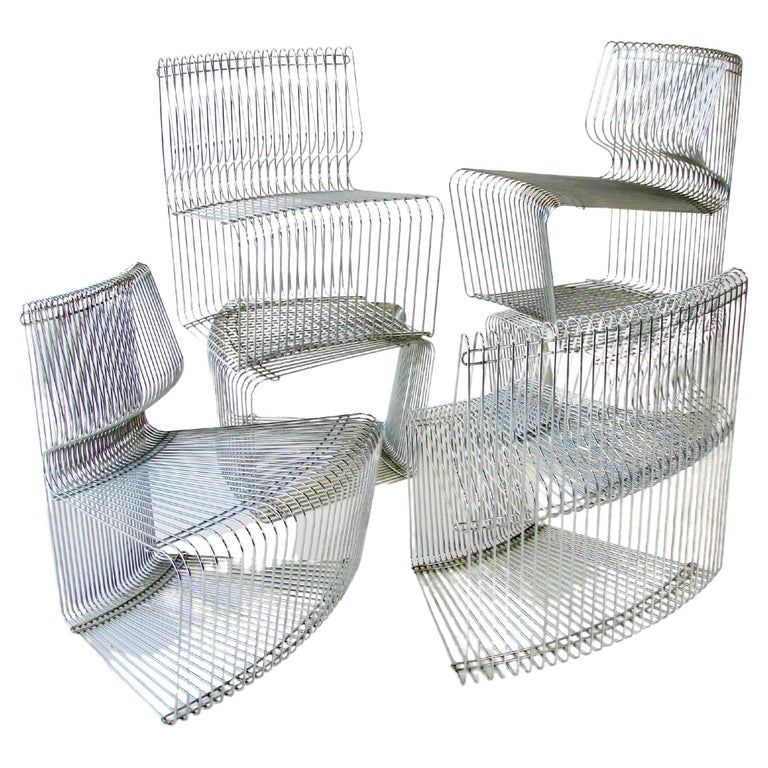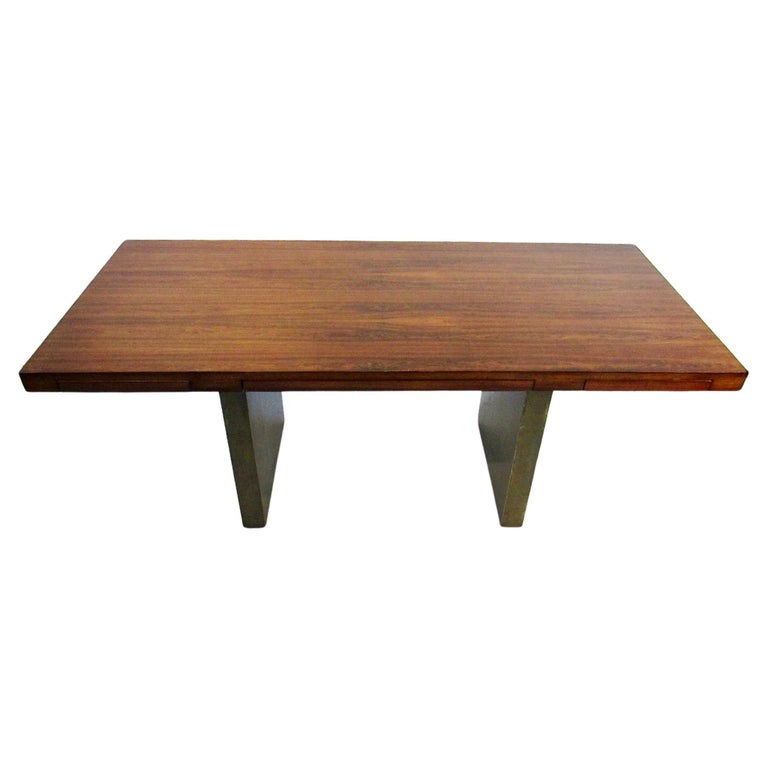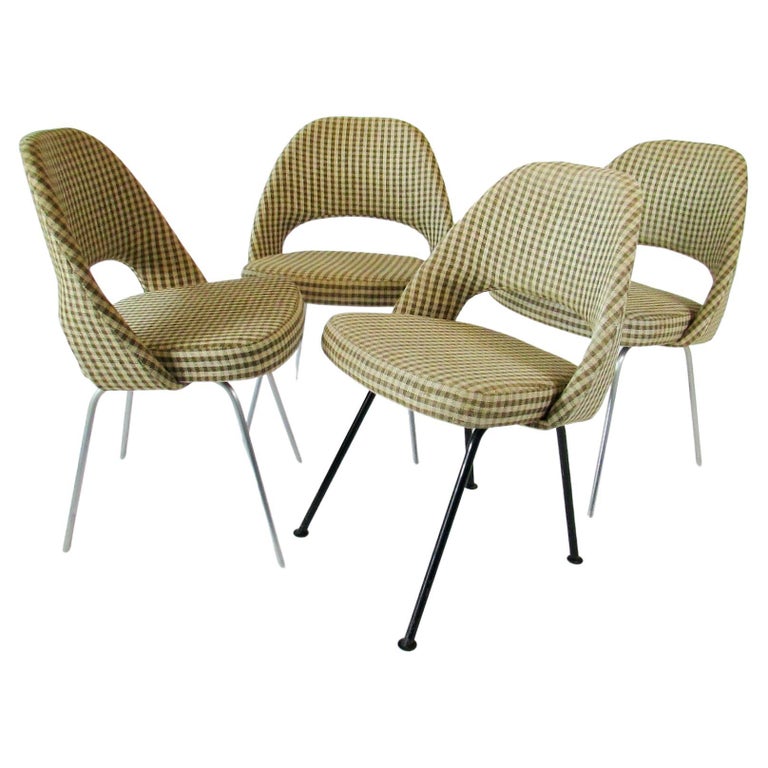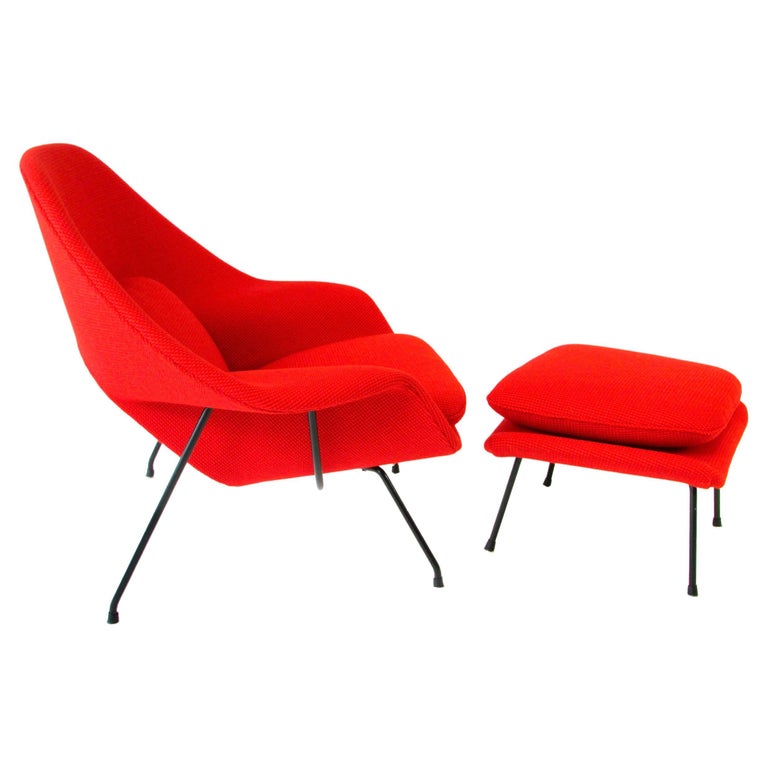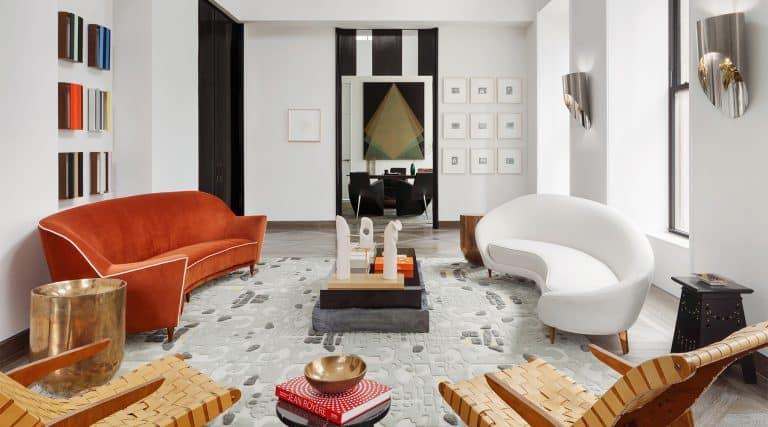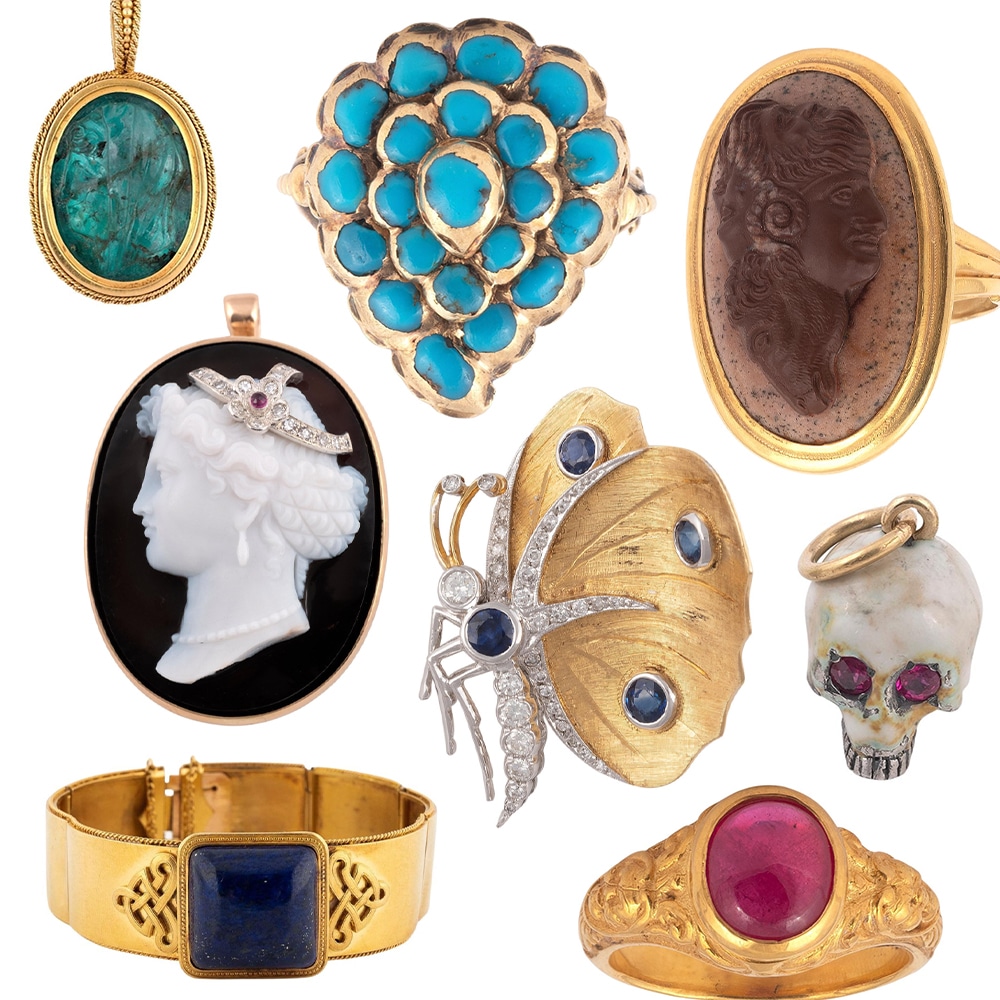
August 4, 2024Glistening in the sunlight, a fawn-gold 1963 Studebaker Avanti, the quintessential sportscar by mid-century design legend Raymond Loewy, sits in front of Tom Gibbs Studio in suburban Detroit. It’s an impressive calling card for Gibbs, a specialist in mid-century American design who spent his grammar-school days on New York’s Long Island obsessing over cars and how to improve and customize them. He started working in garages at 15 and, forgoing a college degree, moved in 1982 to northeastern Pennsylvania, where his parents had relocated, and opened an automotive body shop.
“That’s how I developed my eye for stance, symmetry, fit and finish,” he says.
Gibbs had also honed his eye antiquing with his mother, a nurse who was fond of rescuing furniture and redecorating rooms. “I started going to sales at farms and attending auctions and focused in on modern pieces, from the form-follows-function designs of Charles Eames and Harry Bertoia to the more elegant, sumptuous furniture of Edward Wormley, Billy Haines and T.H. Robsjohn-Gibbings,” he recalls.
By the early 1990s, he’d acquired so much pedigreed furniture that he shifted gears and became a design gallerist, opening his first shop in Allentown.
“I put in my ten thousand hours looking at auction catalogues and old interiors magazines, learning from dealers that I bought from and sold to, like Mode Moderne in Philadelphia and Wyeth in New York City,” Gibbs says. “I would buy every book available about designers, and I especially loved the nineteen-fifties Esempi book series by Roberto Aloi, which had photos of the best designs from around the world.”
Gibbs opened a storefront on 1stDibs in 2008 and quickly built a reputation as a go-to resource, selling vintage furniture that ended up in Ralph Lauren and Rag & Bone stores and on the set of The Marvelous Mrs. Maisel. He also developed a devoted following among such A-list decorators as Roman and Williams, Kelly Wearstler, Nate Berkus, Shawn Henderson and Jeffrey Bilhuber.
In 2011, Gibbs relocated to Detroit, where he purchased an early 1960s cinder-block building that was once home to an importer of brass band instruments. He renovated it himself, dividing the 6,000-square-foot space into a showroom, photography studio and refinishing workshop.

Explaining his decision to move to the Motor City, Gibbs notes that before the decline of the auto industry, Detroit was a prosperous area with great architecture and furniture. “Starting in the nineteen forties,” he says, “designers like Charles and Ray Eames, the Saarinens, Bertoia, Florence Knoll, Jack Lenor Larsen and Paul Evans taught or studied at Cranbrook Academy of Art in Bloomfield Hills, Michigan. And just a couple of hours west of the city, there were furniture manufacturers like Herman Miller; Johnson, which made Paul Laszlo designs; Widdicomb, which worked with Robsjohn-Gibbings; and Calvin, which produced Paul McCobb and Directional designs.”

With his days of finding an Eames chair in a thrift shop or a Gio Ponti table in an antiques mall now in the rearview mirror, Gibbs has embraced lesser-known talents: Jack Heaney, who designed featherlight aluminum-tube-frame stacking chairs, and Pipsan Saarinen Swanson — the daughter of Eliel and Loja Saarinen and older sister of Eero — who designed the Sol-Air collection of lounge seating with iron frames and rope lashings for Ficks Reed.
“I focus on American design from Art Deco to the nineteen seventies. But because it’s harder to find the earlier stuff, I’ll step into the nineteen eighties and nineties,” says Gibbs. “There’s been an increase in popularity in later-twentieth-century minimalist furniture from Roche Bobois, Brueton and Pace. And the blonde burl-wood Milo Baughman look has become a classic. Even early Ikea is now becoming collectible.”
On a recent day at Tom Gibbs Studio, the affable owner talked with Introspective about the enduring appeal of Art Deco, geeking out on the hallmarks of mid-century modern classics and his love of vintage cars and guitars.
Can you describe the most unusual items you’ve ever handled?
I bought most of the furniture from the American composer George Gershwin’s Manhattan apartment. He passed away in 1937 at a very young age, and his mother had her attorney take all the furniture from the apartment: Art Deco pieces with ivory inlays and exotic wood, a Skyscraper-style daybed, a folding screen with a Henry Botkin Cubist-style rendering of An American in Paris, which was a Gershwin symphony. It ended up at the attorney’s north New Jersey property in a dirt-floor barn, and they had to cut down all the weeds and grass around the barn so I could open the doors to get inside.
Why are you an Art Deco fan?
It was a fresh look, coming off Art Nouveau, and part of a new start after World War I. In America, with designers like Gilbert Rohde, Donald Deskey and Raymond Loewy, it was about getting rid of a lot of unnecessary embellishment and making everything lighter, faster, more aerodynamic and streamlined. At the moment, American Art Deco is not as available as it used to be, but when it does turn up, it’s pretty reasonable.

You also have a sharp eye for unusual “smalls,” like pre–World War II miniature cars. How do you determine what makes them worth bringing into a room?
I’m fascinated with what they used to call spindizzies in the nineteen thirties and forties. Essentially, it’s a model race car with a gas engine and a tiny little spark plug that you tether to the ground with a large industrial pin and the car runs in circles around it. Some of them have magnesium bodies, and their age shows through in the patina. They’re not new and shiny. They’re a part of history and make you think about mechanics and movement, and it’s nice to mix something like that in a room.
From your perspective, which designers deserve a little more love?
Cleo Baldon was an architect from Los Angeles who made beautiful chairs and stools from iron and leather. Bodil Kjaer, another female architect, designed a desk in 1957 that is so sleek it was used in three of the earliest James Bond films. It’s one slab of redwood with four horizontal drawers on a chrome base, which makes it look like it’s floating on air.


What styles or materials are underrated?
I think it can be quite stylish to buy a nineteen-forties take on a traditional antique, which many American furniture companies produced, instead of a mid-century-modern design. Traditional takes the hard edge off of mid-century, and mid-century takes the grandmother stuffiness out of traditional. And I’m surprised that Lucite is not more popular. If it’s done right — for example by Charles Hollis Jones and Ritts Co., which was owned by the family of photographer Herb Ritts — it’s got a lot of sexiness. As heavy as a piece of Lucite furniture can be, it’s clear and kind of not there in a room.
Tell us about a memorably unexpected score.
When I was looking to rent a warehouse in Allentown, Pennsylvania, I noticed twenty shells and bases for Saarinen Womb settees. They were just sitting in a corner. I didn’t rent the space, but I did buy the settees and get out of there as quickly as I could.
In a world of reissues and copies, how do you determine whether a piece is authentically vintage?
As a collector, the more proof you can have about the age of a piece, the better. Look at the construction — slotted rather than Phillips-head screws, square nuts over hexagonal ones and intricate joinery are all indications of furniture produced in the first part of the twentieth century. With something like an Eames DCW chair, the early versions had five screws in the wooden leg, while later versions had only four. It’s still an Eames chair but a later issue. Labels can also help you tell the age of things. Water decals tend to be older than metal tags, and some manufacturers changed the address on their labels when they moved.

You certainly have a sharp eye for detail.
For a discussion group on design at my showroom, I did a deep dive on the Saarinen Womb chair for Knoll. From 1948, when it was designed, to about 1950, each of the legs had a flat washer welded to the bottom of the foot — that was the glide. Afterward, they had a slip-on black plastic glide on the wrought-iron leg. Then, they drilled a hole into the leg and put in a threaded stud with a swiveling stainless-steel glide, then a urethane insert in the glide, then a much smaller glide with a nylon pad. That’s just one of the ways you can tell the age of a Womb chair.
Are there designs that you wish you’d held onto?
Many years ago, I got into the executive offices of Bethlehem Steel when it was shutting down, and I was able to buy some of the Paavo Tynell chandeliers — brass with bulbous glass shades that almost looked traditional, probably from the nineteen forties or fifties. I like to caretake for a while, and then I’m happy to send things on their way, but I wish I had kept them.
If money were no object, what design pieces would you most like to own?
A free-form Nakashima table and one of those Paul Frankl cork-topped tables shaped like a big foot, preferably in natural, unfinished cork, not with the creamy white finish on the originals from Johnson Furniture. I like a lot of the Donald Deskey and Gilbert Rohde tabletop lamps from the Machine Age, with chrome and black Bakelite or lacquered wood — it’s a sexy look. I’d be happy to make room in the garage for a 1932 Ford V-8: It’s the consummate hot rod. And I’d like to have an Edward Hopper painting and Calder mobile. You did say money was no object.

What do you love too much to sell?
A 1937 Recording King acoustic guitar by Gibson in perfect condition. It is actually the only thing I’ve ever unlisted from 1stDibs to keep for myself. I buy guitars because I play. The more I buy, the more I learn about them. It won’t make me a better guitar player, but it does increase my affection for them.

